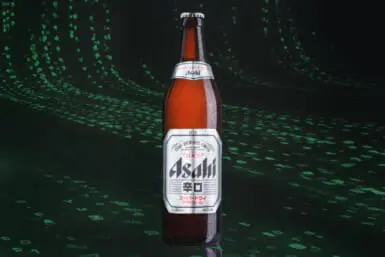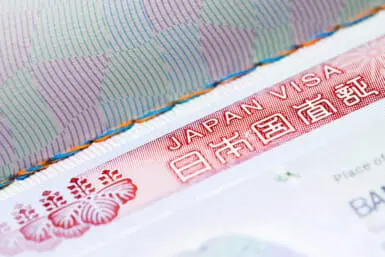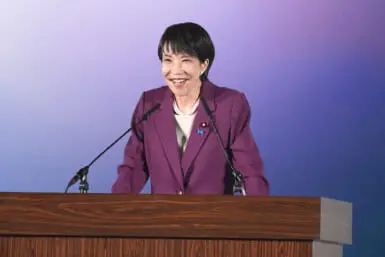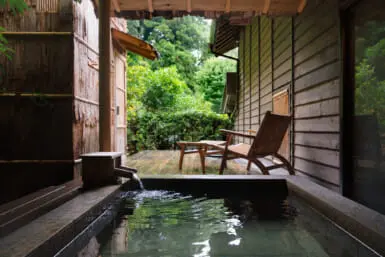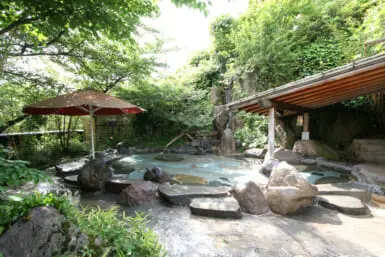Kit Nagamura reads kids like a book
ARTICLES AND NEWSPAPER features on how to live the good life in Tokyo don’t always figure in the factor of kids, and don’t always appear precisely when you need them, either. That’s why they’re called ephemera. Back in my B.C. (Before Conception) days, material on raising kids in Tokyo was everywhere. But once I’d actually got in the family way? Nada. Of course, I had carefully filed ephemera on raising junior (between pages of an old Gourmet magazine and behind the TV, as it turns out), but I found I also had to hit the bookstore. The following list is a modest library of titles most foreign families in Tokyo find indispensable. So, clip this ephemera and file it (ha, ha!).
The Japan Health Handbook, compiled by Meredith Maruyama, Louise Shimizu and Nancy Tsurumaki, heads the list, because it belongs on every English-speaking foreigner’s bookshelf, period. Originally published in 1995, the revised edition (1998) is what you want to look for, as it includes updated health insurance information, expanded listings of doctors and websites, and more in-depth coverage of all topics. While Kodansha International should be encouraged to consider another update, this easy-to-navigate resource nonetheless gives a complete overview of the medical options in Japan. Childbirth, Japanese vaccination schedules, nutrition tips on Japanese food, how to handle culture shock, and even a list of what to bring before you arrive in Japan (oops, too late?) is a tiny sampling of the information you’ll find here. The authors, two registered nurses (Tsurumaki and Maruyama) and a childbirth educator (Shimizu), have each lived over a quarter of a century in Japan and raised their children here. They not only know their stuff, but they know how to demystify it for you.
Next, no parents living here should be without the revised edition of Japan for Kids (2000, Kodansha International) by Diane Wiltshire and Jeanne Huey Erickson. Even my Japanese friends have borrowed my copy — the information is incredibly complete and well organized. Diane Wiltshire was for years the generous authority on Japan 4 Kids in this publication, and together with Erickson, spent three years compiling the first book. The updated version includes topics such as educational options, health care issues and facilities, amusements in Tokyo, travel tips, and even mail order info. Some info you could find on the internet, but the details you really need, for example, when you want to go to the park with Baby (Does it have buggy access? Bathrooms? A place to nurse? Will Junior be happy there too? What about Dad?) are here. Though the title is a little misleading — this is aimed primarily at Tokyo residents — the material presents Tokyo as an attractive place to raise kids, if you know before you go!
When it comes to organizing explorations in the Big Mikan, the following four are the favorite totealongs: Kids’ Trip in Tokyo, by Ivy Maeda, Kitty Kobe, Cynthia Ozeki and Lyn Sato (Kodansha International, 1998); Tokyo for Free, by Susan Pompian (Kodansha International, 1998); Generation Tokyo: A Young Guide to the City, by Matt Wilce (Lightning Media, 2002); and Little Adventures in Tokyo, by Rick Kennedy (Stone Bridge Press; updated edition 1998).
Kids’ Trips offers all sorts of whimsically conceived day tours, with detailed plans on how to make that “Streetcar Adventure” or “Slow Boat to Chinatown” logistically possible. It’s an excellent book if you’d like to approach your meandering with an educational theme in mind. Another nice plus is that it encourages you to venture out to sites in Yokohama, Kamakura, and Kanagawa.
Tokyo for Free is well worth twice its price! The eclectic and wonderful listings inside belie the sense that Tokyo is fun only for the bulging wallets of the okanemochi. Speaking of wallets, this is the book that lists the Ace World Bags and Luggage Museum, featuring a purse made of salmon skin! How can you resist such a fun destination, and it’s free. Includes famous and not-so-bizarre destinations, as well — a must-read!
Rick Kennedy, author of Good Tokyo Restaurants and Home Sweet Tokyo, distills several decades of Tokyo experience into a book arranged around a quintuplet of mood variations in Tokyo. From quiet traditional Tokyo to, as he puts it, “Bizarro Tokyo,” the clearly mapped excursions are fun to read even if you don’t live here. Matt Wilce, another (youngish) old hand in the city and former editor at Metropolis magazine, put together Generation Tokyo to help teenagers figure out how to maximize their free time. The slim volume fits in the back pocket of even skintight jeans, and features novel listings such as skateboard venues, surf spots, mall crawls, and funny insider tips. To order, contact Matt (matt@gaea.ocn.ne.jp).
One caveat: Tokyo changes quickly, rendering information ephemeral overnight. Double check details before you go.
Updated On July 17, 2013



